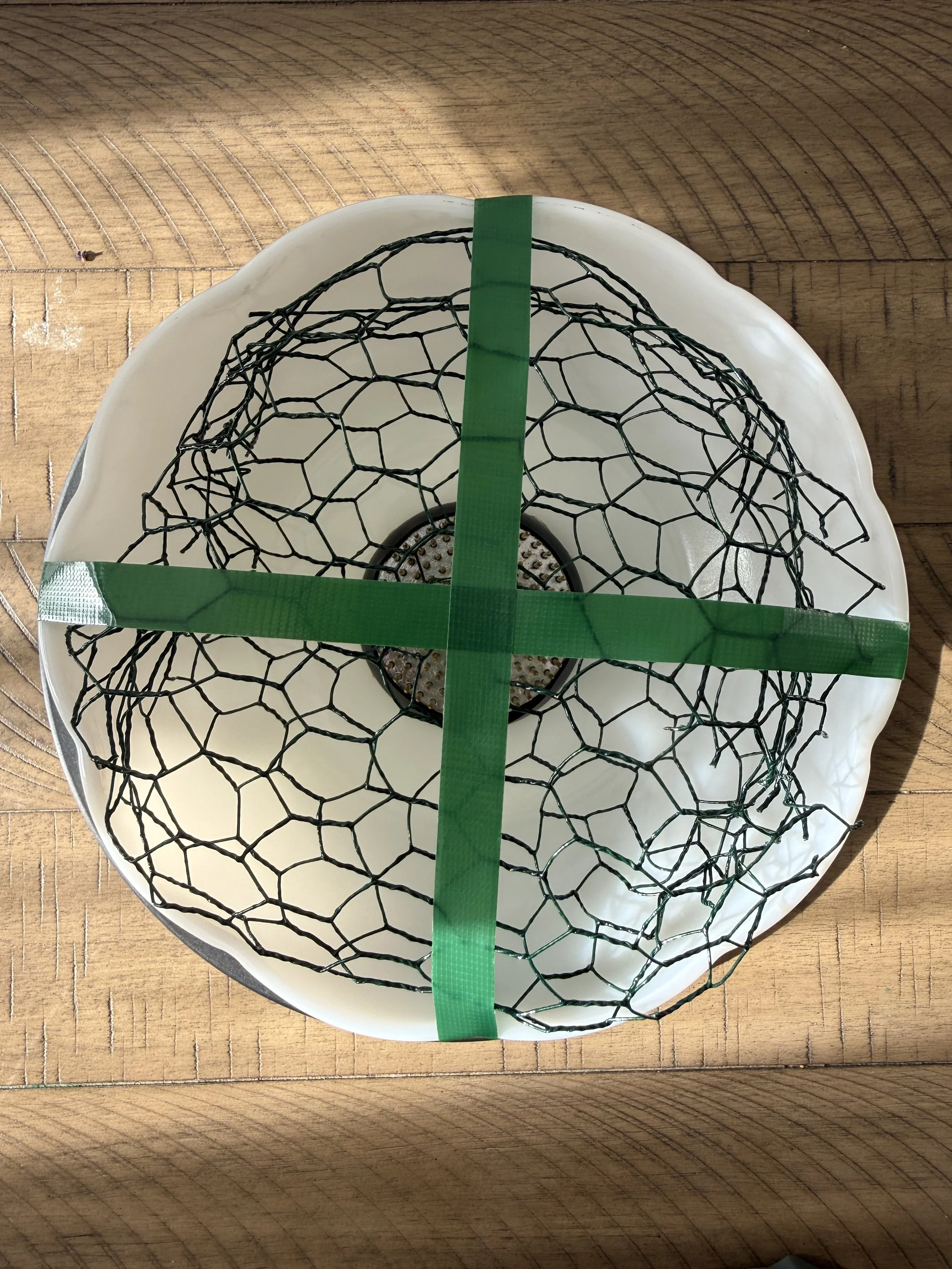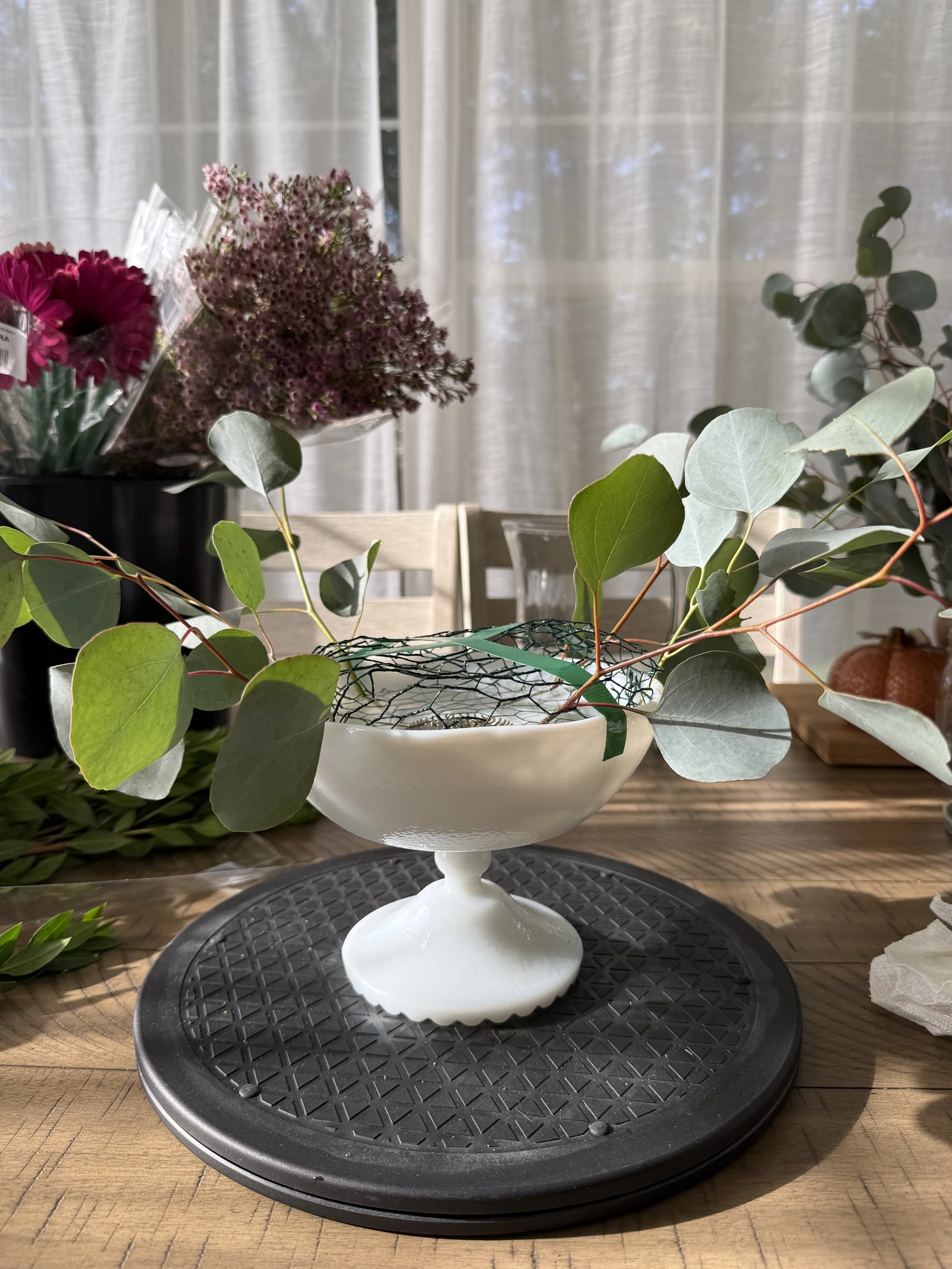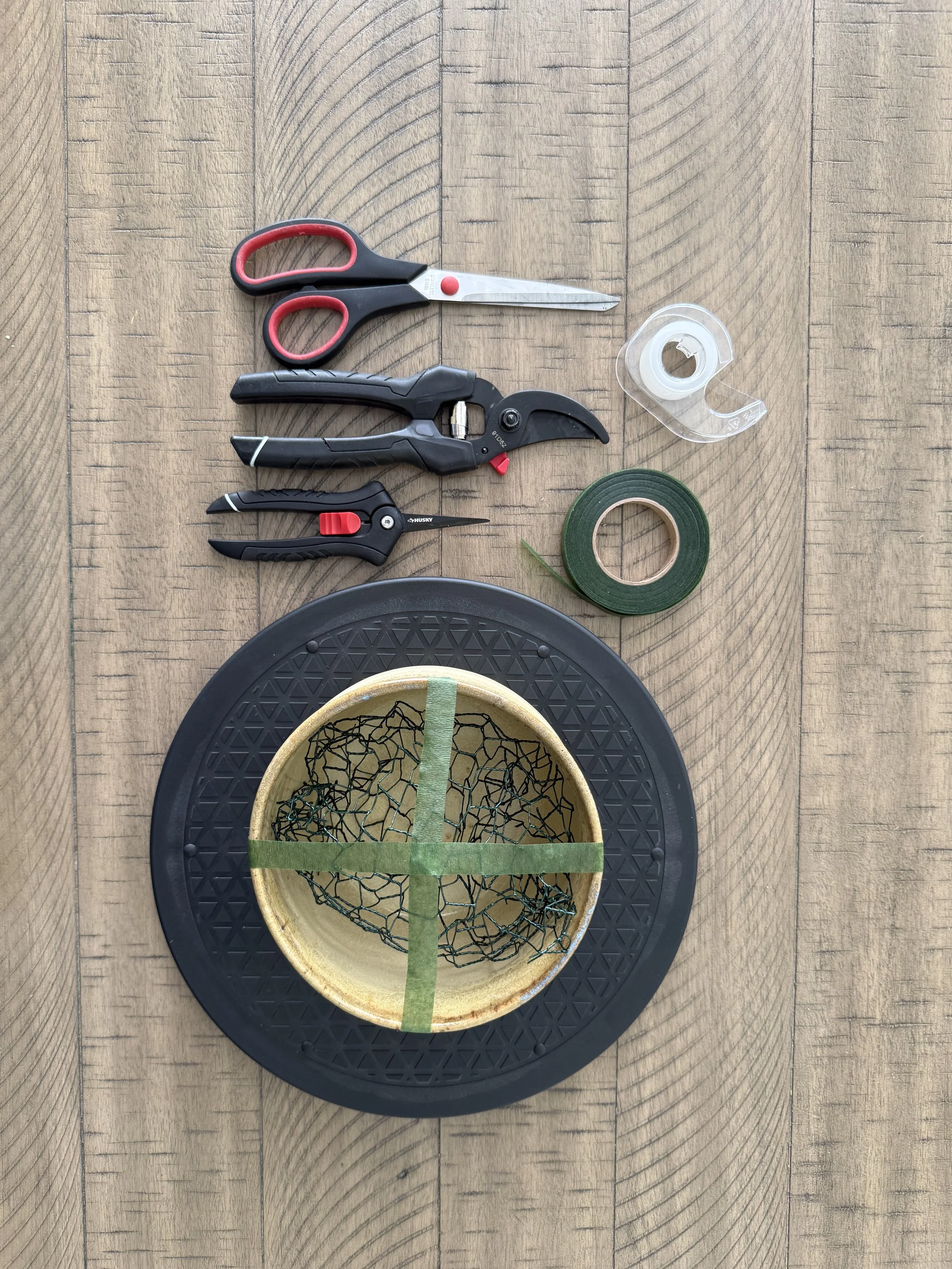The Hidden Magic Behind Every Arrangement: Floral Mechanics
When you look at a bouquet, it’s easy to focus on the blooms — their colors, textures, and the way they effortlessly spill from the vase. But what you don’t see is the quiet structure beneath it all, the hidden framework that keeps every stem in perfect harmony. This invisible foundation is what we florists call floral mechanics, and it’s the secret to making each arrangement both beautiful and lasting.
What Are Floral Mechanics?
Floral mechanics are the materials and techniques that hold an arrangement together — the behind-the-scenes elements that transform a handful of stems into a cohesive, artful design. Think of them as the architecture of a bouquet. Whether it’s wire, tape, or a cleverly placed pin frog, mechanics create stability, shape, and structure so that every bloom has its perfect place.
Common Floral Mechanics (and When to Use Them)
There are many ways to build a foundation for flowers, and each serves a unique purpose:
Floral Foam: A traditional option that provides firm support and water retention, ideal for large installations or designs that need to stay put for long events (Not very sustainable).
Chicken Wire: A more sustainable and reusable option, perfect for creating airy arrangements in compotes, urns, and vases (I personally have a love-hate relationship with wire).
Pin Frogs / Kenzans: Small metal devices with pins that hold stems upright — often used in ikebana-inspired or low, garden-style arrangements (My favorite!)
Floral Tape & Grids: Perfect for creating a framework over vases or securing stems in bouquets, keeping everything stable and elegant.
Zip Ties, Floral Putty, and Tape: The little helpers that keep installations secure, arches intact, and every detail polished.
Each of these tools plays a role in how I bring my designs to life — sometimes even combining several for extra support and creative flexibility.
Why Mechanics Matter
Strong mechanics are the unsung heroes of floral design. They ensure your flowers last longer, hold up during transport, and stay beautifully in place throughout an event. Beyond practicality, they allow for creativity — freeing me to design pieces that look effortless and organic while being built on a solid foundation.
At Out & Blooming Florals, I prioritize sustainable mechanics whenever possible, using reusable materials like chicken wire instead of floral foam. It’s one small way I can create art that’s both stunning and kind to the environment.
A Peek Behind the Scenes
For example, when creating one of my fall arrangements, I start by shaping a nest of chicken wire inside a terracotta urn, then secure it with floral tape for extra hold. From there, I add greenery to build structure and flow before layering in blooms — dahlias, roses, and snapdragons — one stem at a time. By the end, what began as a simple framework becomes a lush, organic composition that feels effortless but is supported by intention and craft.
The Art Beneath the Beauty
Every arrangement tells a story, and floral mechanics are the foundation that allows that story to unfold. The next time you admire a bouquet, know that beneath the petals lies an entire world of design, detail, and care — a quiet kind of magic that makes the flowers bloom their best.
If you love seeing the creative process, follow along on Instagram @outandblooming for more behind-the-scenes peeks and floral tips from the studio!





